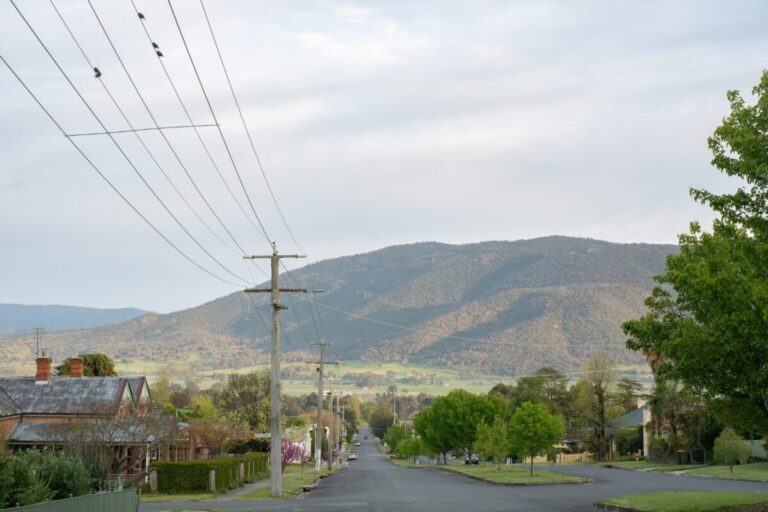Construction has begun on a solar and battery-based microgrid that will provide the city of Corryong in Victoria’s northeast with crucial energy resilience, keeping the power on during emergencies such as bushfires and storms.
Victorian distributed network service provider AusNet has started construction of an ‘islandable’ microgrid that will integrate a centrally located 4.99 MW/5.2 MWh battery energy storage system and a range of residential solar and battery systems to power Corryong homes, power businesses and community facilities during a network outage.
The centralized battery will connect to 33 solar energy systems and batteries on the roof of homes. The rooftop PV systems range from 6 kW to 11 kW in size, while the residential batteries have a capacity of 11 kWh to 19 kWh. AusNet said each of these installations is linked to a smart energy management platform from Mondo, its retail arm, to optimize and coordinate energy use. The microgrid will also include 3 MW of diesel generation.
AusNet said the Corryong microgrid, expected to be completed in early 2026, will be ‘islandable’, able to operate independently of the electricity grid and provide power to more than 900 households and businesses for up to five days during network outages.
“When the upstream network encounters an outage, Corryong Municipality will disconnect from the grid and rely entirely on the microgrid battery as the main supply point,” the electricity grid company said.
“When the battery is low, three generators installed on the microgrid site will provide power to the municipality for approximately five days. Unused solar power generation within the microgrid boundary can also contribute to battery charging.”
Corryong, about 120 kilometers east of Wodonga in the state’s northeast, was one of the Victorian towns worst hit by the 2019-20 crisis. Black summer forest fires.
Emergency Management Minister Murray Watt said the microgrid will provide better energy resilience in the face of increasing extreme weather.
“In the past, the region has been disconnected from the electricity grid for more than a month due to bushfires, so this new microgrid will make a significant difference in keeping the community safer and better connected,” he said.
Popular content
Funding for the $28.6 million (USD19.06 million) Corryong microgrid comes from the Federal Government’s Disaster Ready Fund, AusNet and the Victorian Government.
The project is an extension of the state government’s nearly completed Community Microgrids and Sustainable Energy Program, which has funded the installation of resilient energy systems around the world. 26 cities It has been determined that there is a high risk of network disruptions during extreme weather events.
This content is copyrighted and may not be reused. If you would like to collaborate with us and reuse some of our content, please contact: editors@pv-magazine.com.


